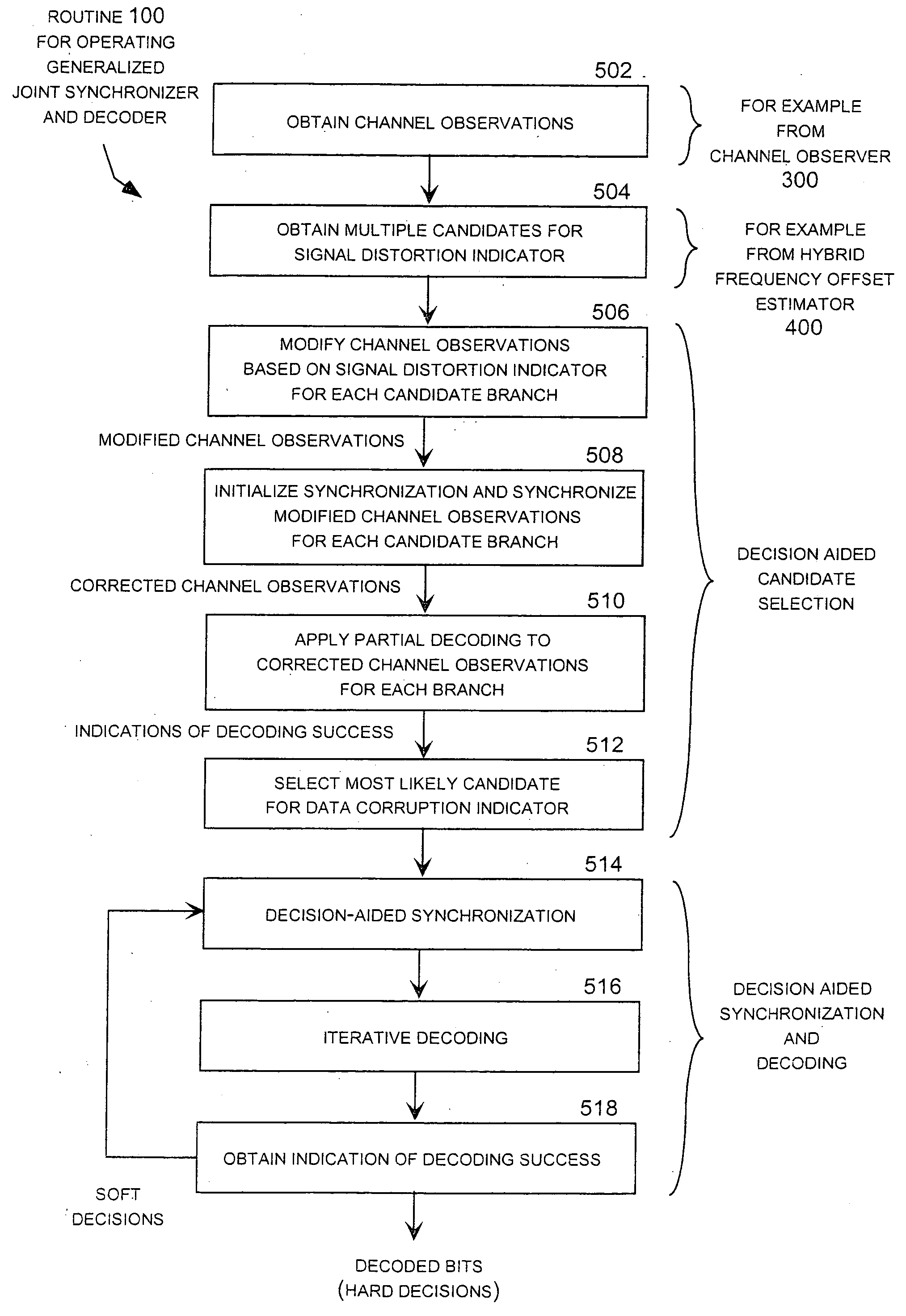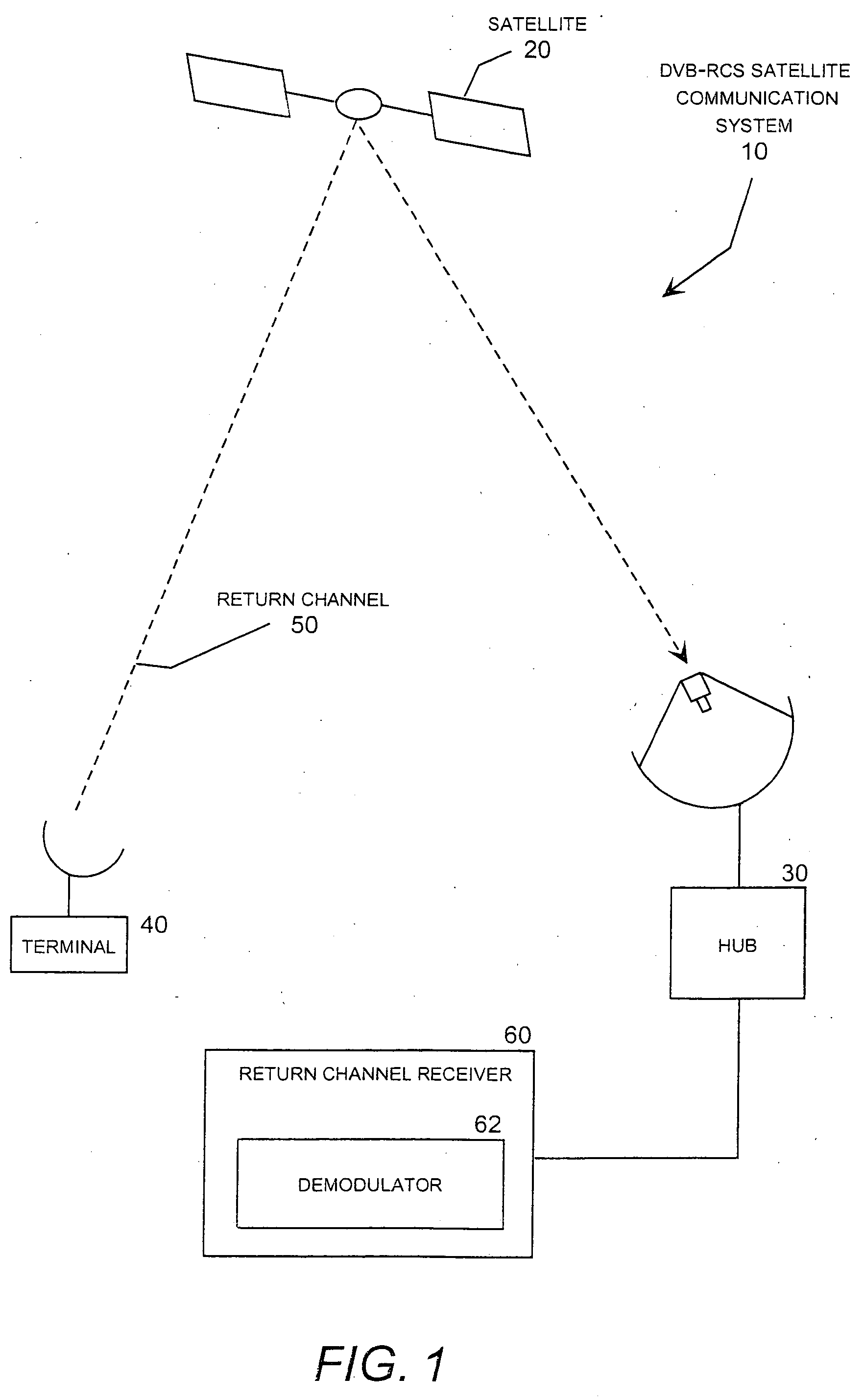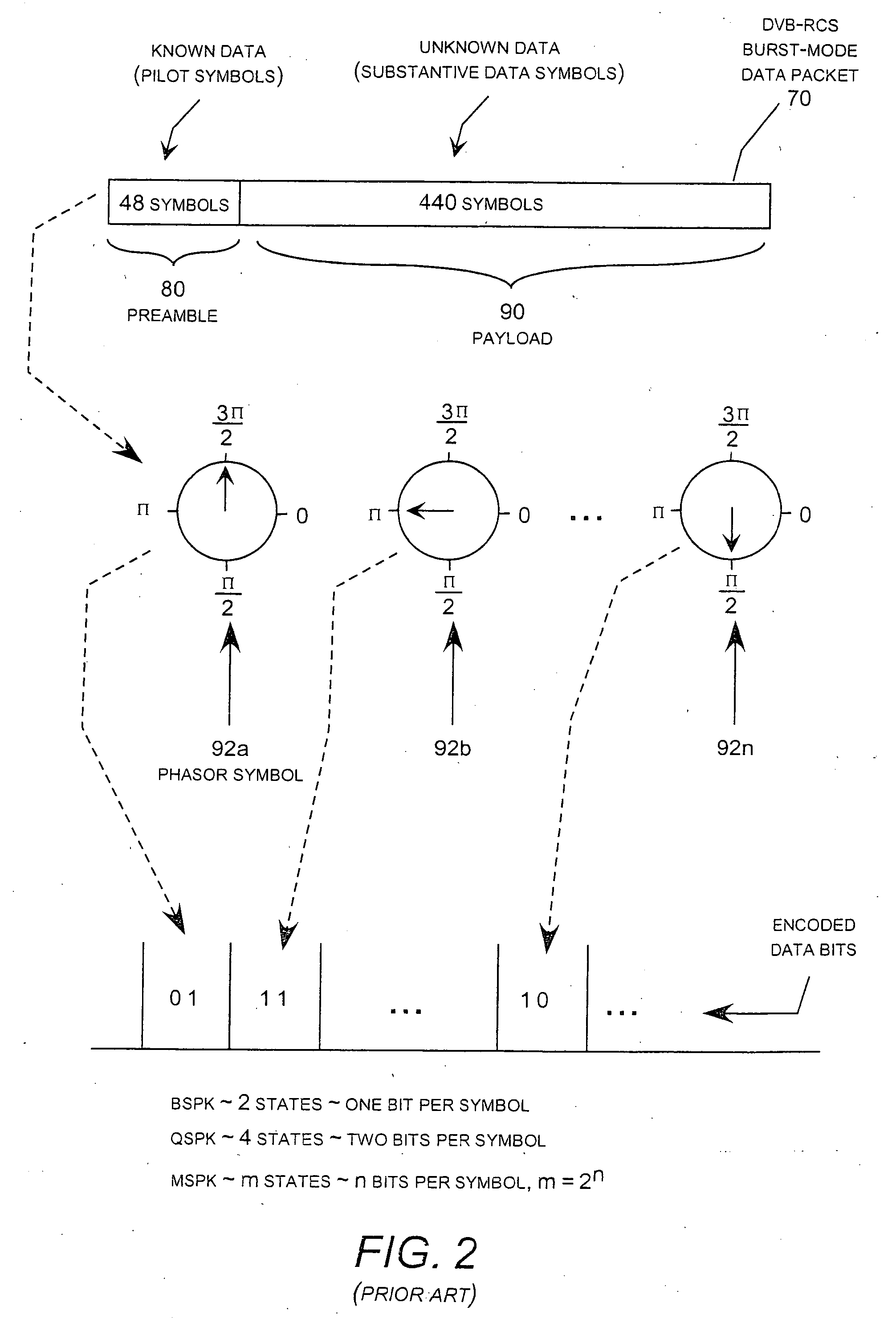Joint synchronizer and decoder
a synchronizer and decoder technology, applied in the field of digital signal processing techniques, can solve the problems of user terminals, unacceptable increase in transmission power of receivers, and increased cost of receivers, so as to reduce power level and cost, increase the likelihood of selecting, and reduce the signal-to-noise ratio
- Summary
- Abstract
- Description
- Claims
- Application Information
AI Technical Summary
Benefits of technology
Problems solved by technology
Method used
Image
Examples
Embodiment Construction
[0052] The main objective of the joint synchronizer and decoder (JDS) described below is to improve the power efficiency of burst-mode transmission of encoded data. Recent advancement in error correction coding techniques used over communication channels has made it possible to lower the transmitted power requirement to achieve a target performance for a given channel condition. Using schemes such as iterative decoding of turbo codes and Low Density Parity Check (LDPC) codes, the power requirements approach theoretical lower bounds established by channel capacity.
[0053] In a conventional coherent detection and decoding of encoded signal, it is essential to correct the channel observation for signal distortion, such as inter-symbol interference, carrier frequency offset, and phase noise prior to signal decoding. In particular, for burst-mode data transmission over satellite, the lack of accurate carrier frequency and phase synchronization can cause performance degradations that over...
PUM
 Login to View More
Login to View More Abstract
Description
Claims
Application Information
 Login to View More
Login to View More - R&D
- Intellectual Property
- Life Sciences
- Materials
- Tech Scout
- Unparalleled Data Quality
- Higher Quality Content
- 60% Fewer Hallucinations
Browse by: Latest US Patents, China's latest patents, Technical Efficacy Thesaurus, Application Domain, Technology Topic, Popular Technical Reports.
© 2025 PatSnap. All rights reserved.Legal|Privacy policy|Modern Slavery Act Transparency Statement|Sitemap|About US| Contact US: help@patsnap.com



